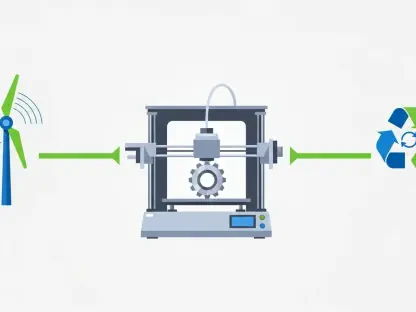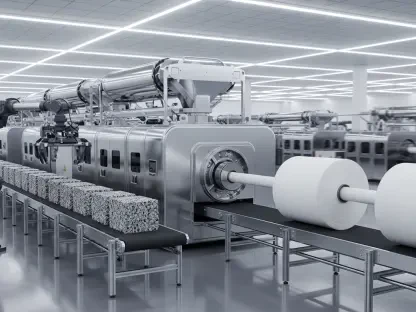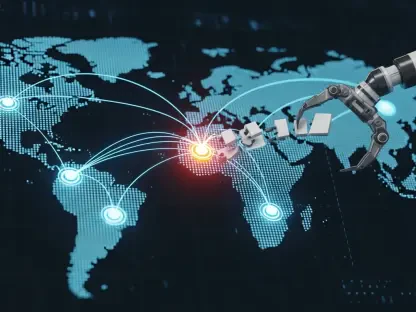In today’s rapidly evolving automotive landscape, one of the key players transforming the field of autonomous vehicles is Waymo. Having started as a project under Google, Waymo has steadily carved out its presence in this challenging sector. Our conversation today is with Kwame Zaire, a manufacturing expert and thought leader in predictive maintenance and quality. He’ll share insights into Waymo’s collaboration with Magna International, new developments in Arizona, and how these initiatives are propelling the company forward despite industry challenges.
Can you tell us more about the partnership between Waymo and Magna International?
The collaboration with Magna International is a strategic one for Waymo. Magna is a leading auto parts supplier, and this partnership allows Waymo to leverage its expertise in manufacturing while focusing on the integration of autonomous technology. By working with Magna, Waymo ensures that its vehicles are built to the highest standards, which is crucial for autonomous applications where reliability and precision are non-negotiable.
What led Waymo to choose Arizona as the location for its new vehicle factory?
Arizona presented itself as an ideal location due to several factors, including a favorable regulatory environment for autonomous vehicle testing and deployment. The state has been a hub for innovation in this field, providing the necessary infrastructure and support systems. Moreover, the strategic positioning also helps in optimizing logistics and supply chain elements, something Waymo undoubtedly considered to ensure seamless operations.
How would you describe the significance of the Mesa factory to Waymo’s growth?
The Mesa factory is pivotal for Waymo’s ambitions. It’s not just about expanding production capacity; it’s about establishing a central hub for innovation and technological integration. This facility will significantly enhance Waymo’s ability to scale its operations and improve the delivery timelines for their autonomous fleet, all of which are crucial for maintaining and accelerating momentum in the competitive landscape of autonomous vehicles.
What kind of investments has been made in the Mesa factory?
The investments in Mesa are multi-million dollars in scope. This includes the advanced equipment needed for the integration of autonomous technologies into new vehicle models. The investment also extends to the workforce, since creating hundreds of new jobs means hiring skilled technicians and engineers who can support the assembly and development of these complex systems.
How many jobs has the Mesa factory created?
The factory has created hundreds of jobs, which underscores its importance not just to Waymo but also to the local community. These roles span various specialties, from production and engineering to research and development, demonstrating Waymo’s commitment to building a robust operational base.
Could you elaborate on the role of the Mesa factory in scaling Waymo One?
The Mesa factory plays a crucial role in scaling Waymo One by serving as the production hub for integrating autonomous technology into vehicles. With this facility, Waymo can ramp up the production of their self-driving fleet, enabling them to offer more rides and expand the service to new geographic locations. It’s central to their strategy of increasing the availability and reliability of the Waymo One ride-hailing service.
What steps are involved in building the Jaguar I-PACE and Zeekr vehicles with Waymo’s autonomous technology?
Building these vehicles involves a multi-step process where traditional automotive engineering merges with cutting-edge technology. First, the base vehicles are manufactured with high precision. Then, Waymo’s proprietary autonomous technology, known as the Waymo Driver, is integrated. This involves installing sensors, software, and systems that enable full autonomy, followed by rigorous testing to ensure safety and performance standards.
How will these new vehicles contribute to the expansion of Waymo One?
These new vehicles will significantly increase the fleet available for Waymo One, allowing them to meet growing demand in existing markets and penetrate new ones. By adding a diverse range of autonomous-ready vehicles to their lineup, Waymo can offer a more versatile and efficient ride-hailing service, which is essential for large-scale deployment.
What are some of the challenges Waymo has faced in the autonomous vehicle market?
The challenges are multifaceted, ranging from technological hurdles like perfecting the AI algorithms to navigating the complex regulatory landscapes worldwide. There’s also the challenge of public perception and trust in self-driving cars, which requires ongoing testing and demonstrations of safety and reliability to address.
How has Waymo managed to grow steadily in a market with numerous challenges?
Waymo’s steady growth can be attributed to its methodical approach, prioritizing safety and incremental technological advancements. Instead of rushing to market, they’ve focused on building a reliable platform, forming strategic partnerships, and gradually expanding their service areas once they meet all safety requirements. This cautious yet forward-thinking strategy has helped them maintain their position as a leader in this space.
Can you provide insights into Waymo One’s current operations and reach?
Currently, Waymo One operates in major cities like San Francisco, Phoenix, Los Angeles, and Austin, providing over 250,000 paid rider trips weekly. The service has successfully completed over 4 million paid trips last year, demonstrating their wide reach and capability to handle large-scale operations.
What are Waymo’s plans for geographic expansion with Waymo One?
Waymo plans to expand its reach by adding new cities such as Atlanta and Miami, followed by Washington, D.C., by 2026. This expansion strategy aligns with their commitment to making autonomous ride-hailing services accessible in more urban centers across the U.S., differentiating them from competitors.
How does Waymo plan to integrate its technology into new vehicle platforms?
Waymo is investing in integrating its self-driving technology into new vehicle platforms starting with the Zeekr RT. They aim to create a modular system that can be adapted to various vehicle types, thus broadening their potential market and enhancing their ability to offer tailored autonomous solutions.
Can you explain more about the Zeekr RT and its role in Waymo’s plans?
The Zeekr RT represents the next step in Waymo’s vehicle diversification strategy. Integrating Waymo’s autonomous systems with Zeekr’s platform opens up new opportunities for innovation and customization, allowing Waymo to offer a wider range of autonomous vehicle options to customers.
What future growth plans does Waymo have in mind, as mentioned by Ryan McNamara?
Ryan McNamara highlighted that the Waymo Driver integration plant in Mesa is crucial for future growth. This includes increasing production capacity, refining autonomous technologies, and scaling operations to support expanding service areas. These initiatives will help Waymo achieve sustained growth and continue leading in the autonomous vehicle market.
What is your forecast for the autonomous vehicle market?
I expect the next few years to be transformative. As technology matures and regulatory frameworks become clearer, we’ll likely see broader adoption of autonomous vehicles in both urban and suburban areas. Companies that have invested in robust safety protocols and strategic partnerships, like Waymo, will particularly benefit as public trust in autonomous systems grows.









